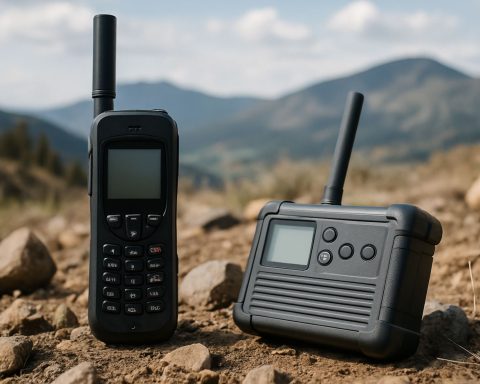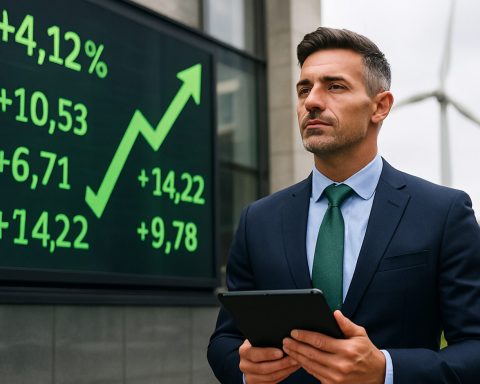- Elon Musk promised that Teslas would appreciate in value, attracting many buyers and investors.
- Contrary to expectations, Teslas have depreciated, challenging Musk’s assurance of value growth.
- The Full Self-Driving (FSD) system was intended to raise vehicle value, but price slashes undermined this promise.
- Tesla owners feel disillusioned as vehicle depreciation outpaces typical expectations.
- The vision of a self-driving future remains largely unfulfilled as current hardware limitations persist.
- Musk admits the challenge of achieving autonomy as a painful and difficult process.
- The Tesla narrative underscores the difficulty of turning ambitious visions into reality, urging cautious optimism for future innovations.
The allure of owning a futuristic automobile, one that defies time and economic norms, captivated many as Elon Musk made a promise that seemed too grand to falter. Buy a Tesla, he declared, and you’re not just purchasing a piece of automotive luxury; you’re securing an asset that would increase in value. The vision was electric, much like the cars themselves—sleek, silent, and groundbreaking. Yet, for tech enthusiasts and investors who took Musk’s word as gospel, the reality has been a stark journey through depreciating figures and unfulfilled tales of futuristic roads.
Imagine holding a piece of technology that is supposed to buck the trend, to swim against the tides of standard depreciation, but watching it steadily lose its shine. This narrative turned unsettlingly tangible for Zack Nelson, the renowned tech YouTuber better known as JerryRigEverything. His 2018 Tesla Model X, once a beacon of this promise, now represents a sobering 20% of its original price tag. The expected journey upward instead spiraled into a deeper depreciation than the average vehicle’s descent, challenging the edifice of assured appreciation that Musk painted back in 2019.
There was a time Musk painted a vivid landscape in which Teslas, equipped with Full Self-Driving (FSD) capabilities, would not just hold but grow in worth. Musk’s premise relied on the assumption that the FSD package would see burgeoning costs, naturally elevating the value of these electric marvels. Instead, the market saw an unexpected tumble, as Tesla slashed FSD prices multiple times since 2023, leaving owners like Nelson and countless others in the dust.
Many Tesla owners, spurred initially by Musk’s grand design, echo Nelson’s concerns. There is a shared sense of disenchantment among them, a feeling of having committed to a venture that asked them to walk where the bridge wasn’t yet built. Stories abound of multiple Tesla purchases, only to witness each car’s value plummet at an unsettling pace, further fueled by Musk’s unyielding focus on a distant vision—a formidable robotaxi network, looming ahead like a mirage. The promise of full autonomy remained a distant horizon, with Tesla’s current hardware falling short of its lofty claims.
Musk, once buoyant with optimism about the capabilities of self-driving technology—predicting its near arrival more than half a decade ago—now confronts a tougher reality. The self-driving odyssey is anything but “solved,” a realization that has proven, in his own words, “absolutely painful and difficult.” The dream of autonomous vehicles, cruising effortlessly through cityscapes, grapples with the inertia of reality and technical limitations, edging further away with each admission of the current hardware’s shortcomings.
Ultimately, this unfolding Tesla saga is a testament to the unpredictability and pressures of converting ambitious visions into grounded reality. For buyers, investors, and enthusiasts alike, the spectacle serves as a pointed reminder: grand promises, no matter how electrifying, demand cautious optimism. The future, it seems, arrives with its own set of surprises, challenging initial promises and inviting a critical gaze at what lies beneath the polished veneer of innovation.
Why Investing in a Tesla Isn’t Always a Lucrative Gamble
Understanding the Reality Behind Tesla’s Resale Value
The allure of owning a Tesla has captivated many, driven by Elon Musk’s promises of an appreciating asset. However, the market trend tells a different story. Let’s delve into aspects not fully explored in the source material to understand why Tesla’s vehicles might not be the gold mines they were once perceived to be.
The Depreciation Dilemma
1. Depreciation Rates: Tesla cars have not defied the standard depreciation curve of automobiles. Studies indicate that electric vehicles (EVs) depreciate faster than traditional cars due to rapid technological advancements and battery deterioration (Source: iSeeCars).
2. FSD Pricing Confusion: The fluctuating price of Tesla’s Full Self-Driving (FSD) features has contributed to depreciation. Initially, Musk predicted that FSD’s increasing price would offset the cars’ depreciation, but recent cuts since 2023 have debunked this notion.
Technical and Market Limitations
1. Full Autonomy Challenges: Despite advancements, Tesla’s self-driving technology faces substantial hurdles. Current hardware limitations, regulatory challenges, and safety considerations have delayed the reality of fully autonomous vehicles (Source: Consumer Reports).
2. Market Saturation: As more electric vehicles enter the market, competition intensifies, impacting Tesla’s market share and resale value. Numerous automotive giants are scaling up their EV production, meeting the demand with more diverse options.
Real-World Use Cases and Industry Trends
1. Emergence of Competitors: Brands like Rivian and Lucid Motors are becoming prominent players, offering distinctive features that cater to luxury EV consumers. This can be seen in market forecasts suggesting a shift towards diversified EV options.
2. Improving Battery Life: While Tesla’s batteries rank high, competitors are advancing rapidly. Innovations focused on improving range, charging speed, and battery lifecycle could soon overtake Tesla’s offerings.
Pros and Cons Overview
– Pros:
– Advanced driving technology with frequent over-the-air updates.
– Strong network of Superchargers facilitates convenience for long-distance travel.
– Environmental incentives and tax credits for EV purchases in several regions.
– Cons:
– High initial purchase price and fluctuating costs for optional features like FSD.
– Resale value concerns due to rapid model and feature updates.
– Ambiguity around the timeline for actualizing full autonomy.
Recommendations and Quick Tips
1. Consider Total Ownership Costs: Look beyond the sticker price and evaluate long-term expenses like maintenance, potential depreciation, and insurance.
2. Evaluate Resale Market: Regularly check resale markets for trends and forecast your car’s value. Platforms like Kelley Blue Book and Edmunds provide insights into car value projections.
3. Stay Informed on Technological Developments: Follow updates on Tesla’s autonomous driving software closely. Changes in technology and regulatory environments can significantly impact valuation.
Related Links
For more insights into Tesla and the evolving EV market, visit Tesla’s official website.
Conclusion
While Tesla remains a leading figure in the EV industry, prospective buyers and investors should approach with informed caution. The lessons learned emphasize the importance of tempered expectations and comprehensive market understanding. As the industry evolves, staying well-informed will be critical in navigating the tech-laden journey of electric vehicle ownership.









